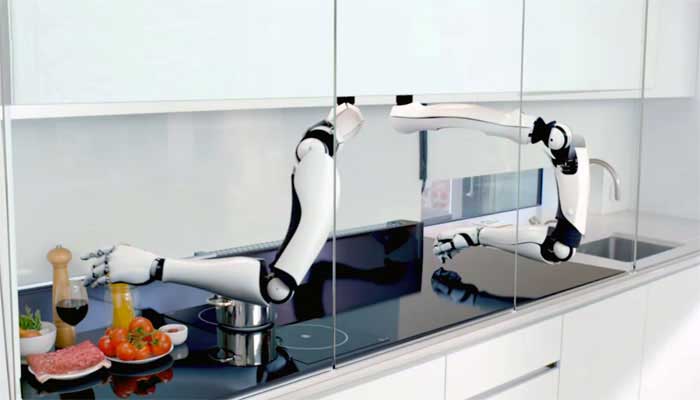It has been predicted that in the next 30 years, many roles in the work force will be replaceable by automated devices. As the world of technology is evolving, our dependency on human actions is decreasing.
Moley Robotics has invented a completely automated intelligent robot that has the ability to cook and prepare meals as well as clean up after itself. This particular device can be replicate precise recipes preloaded into its internal memory from everything between a fast food hamburger and a gourmet dish.
Robots have been used in surgery since 2000, albeit still operated by a human. The benefit here is that they are extra precise and accurate providing the human operating the machine is precise and accurate.
Soon, in Japan, the world's first automated farming system will launch. The robots will be able to grow, water, and farm the crops. The only thing they won't be able to do is to sew the seeds. In fact robots are replacing humans everywhere, from delivery drivers to pharmacists, from telemarketing to construction. The obvious benefit is saving money on paying staff wages, and although the initial setup is currently very expensive, this is likely to decrease over time, and soon many more companies will be able to afford the long time investment.
Also, with the aim of a larger profit, machines will be able to work quicker than humans; mass production is something that can be programmed. If a machine can also self replicate, then it becomes a catalyst to its own process.
Robots, unless programmed to do so, will not have feelings and social problems which could potentially slow down or effect their work in a negative way. They also don't need to be paid wages or have staff benefits, or even have lunch as they are purely machines. Robots are able to work in space, and underwater, and in very hot and very cold climates where humans cannot without very expensive equipment.
Machines are much more accurate and consistent. Once a machine is mass producing it should, in theory, produce exactly the same product over and over again, whereas a human has a higher chance of error and a lack of consistency. Machines can create anything on any scale; from buildings to microscopic devices. They will eventually only be confined by the laws of physics.
The major disadvantage is the lack of emotion when dealing with customers. People have developed the expectation to be greeted warmly when they enter a hotel by a receptionist, or to talk to somebody over the phone who understands on the same scale that they do. Also, as the popularity of robots increases, alongside the growing world population, unemployment is likely to become a larger issue when automated machinery takes over. Ironically, the demand jobs developing robots and automated devices is likely to increase as companies will look to automation as a way of saving money, and until a robot can think for itself, it will not be able to develop new ideas.
Machines are not learning devices, they are only capable to doing what they are programmed to do. This means that a machine will not improve over time unless somebody has programmed an improvement. Robots are also very expensive to set up, to maintain, and to repair. Setting up an automated production line has to be seen as an investment rather than an immediate saving.

